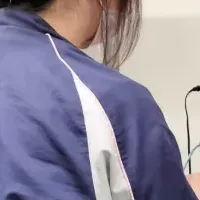
Innatera Unveils Groundbreaking Neuromorphic Processor for Ambient Intelligence at CES 2025
Innatera Unveils its Innovative Spiking Neural Processor at CES 2025
On January 7, 2025, Innatera, a pioneering company in ultra-low power neuromorphic processors, made headlines at CES 2025 by showcasing its latest creation, the Spiking Neural Processor (SNP). This revolutionary processor is designed to change the way battery-operated devices interpret their physical environment, heralding a new age of ambient intelligence.
Innatera's booth, located in the Venetian North Tower Suite #26-136, showcased live demonstrations from January 7-10, illustrating the SNP's capabilities. CEO Sumeet Kumar commented, "At this pivotal moment in computing, Innatera's breakthrough Spiking Neural Processor delivers unmatched energy-efficient, brain-inspired cognition for sensors, unlocking the promise of ambient intelligence." The SNP leverages a proprietary analog-mixed signal computing architecture, integrating a Spiking Neural Network (SNN) engine with a RISC-V processor core to enhance performance in energy-restricted situations.
The single-chip architecture places intelligence much closer to the sensors, allowing for cutting-edge AI and signal processing applications across various domains, including consumer electronics, smart homes, and industrial Internet of Things (IoT). Applications highlighted at the event included audio interfaces, touch-free controls, presence detection, and ECG recognition.
The processor is noted for its exceptional capabilities in real-time sensor data analysis, boasting sub-milliwatt power dissipation and sub-millisecond latency, enabling it to recognize complex patterns directly at the sensor edge. This performance is a crucial feature for the increasing demand for ambient intelligence, where devices autonomously coordinate and adapt functionalities based on environmental cues.
Real-World Applications Driving Ambient Intelligence
During CES, Innatera illustrated how the SNP could transform numerous real-world applications:
1. Audio Scene Classification: This feature allows devices to understand their operating environment, adjusting their functionalities according to the surrounding noise. For instance, noise-canceling headphones can adapt their settings based on the ambient noise levels, whether on an airplane or a crowded bus.
2. Robust Human Presence Sensing: Vital for various indoor and outdoor applications, such as security and smart lighting, this capability utilizes radar sensors to accurately detect human presence while preserving privacy and maintaining energy efficiency.
3. Advanced People Counting: By employing Far Infrared Sensors, Innatera demonstrated how the SNP can facilitate sophisticated counting mechanisms for occupancy detection in a non-intrusive manner. This method ensures privacy and efficacy even under low-light conditions.
Innatera's significant presence at CES 2025 comes on the heels of an outstanding year that saw the completion of a $21-million oversubscription Series A funding round, propelling the company's efforts in developing this next-generation neuromorphic processor. As the anticipation builds towards ambient intelligence's future, Innatera aims to integrate brain-like capabilities into a billion sensors by 2030, ensuring smarter, safer, and cleaner interactions with technology.
In conclusion, the Spiking Neural Processor is not just a technological marvel but also a critical step towards creating a more intuitive tech landscape. With devices becoming increasingly adept at processing their surroundings, the concept of ambient intelligence is no longer a vision for the future but a reality initiated by innovations such as Innatera's SNP.
Topics Consumer Technology)










【About Using Articles】
You can freely use the title and article content by linking to the page where the article is posted.
※ Images cannot be used.
【About Links】
Links are free to use.